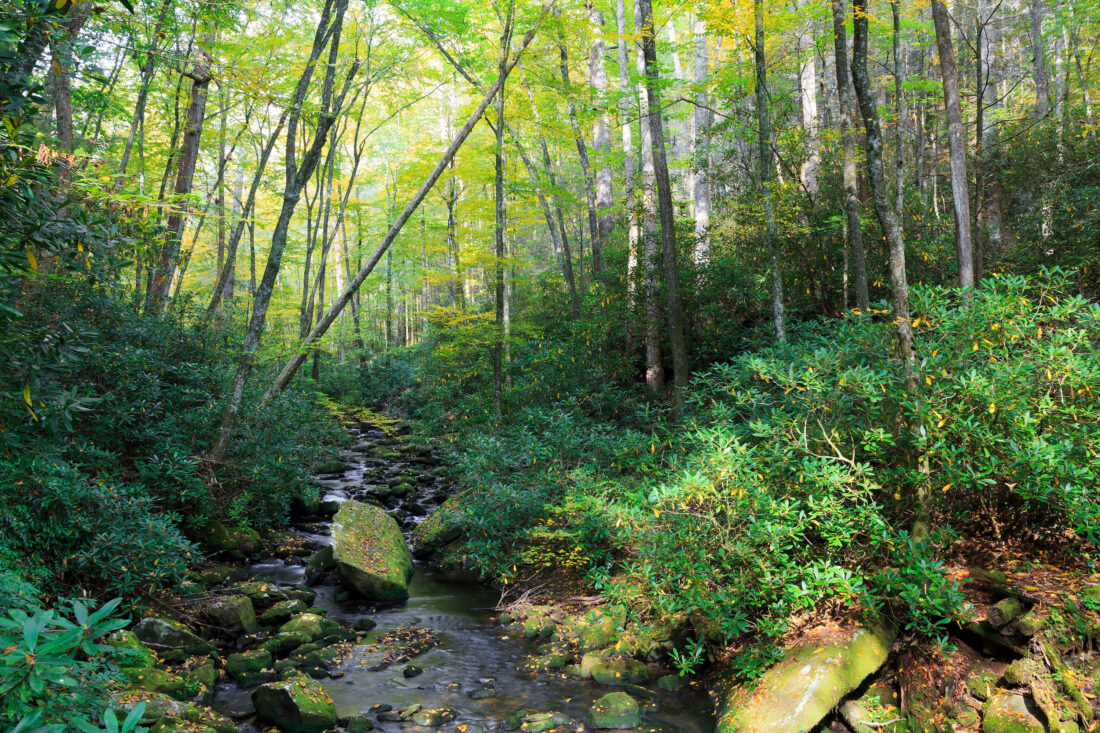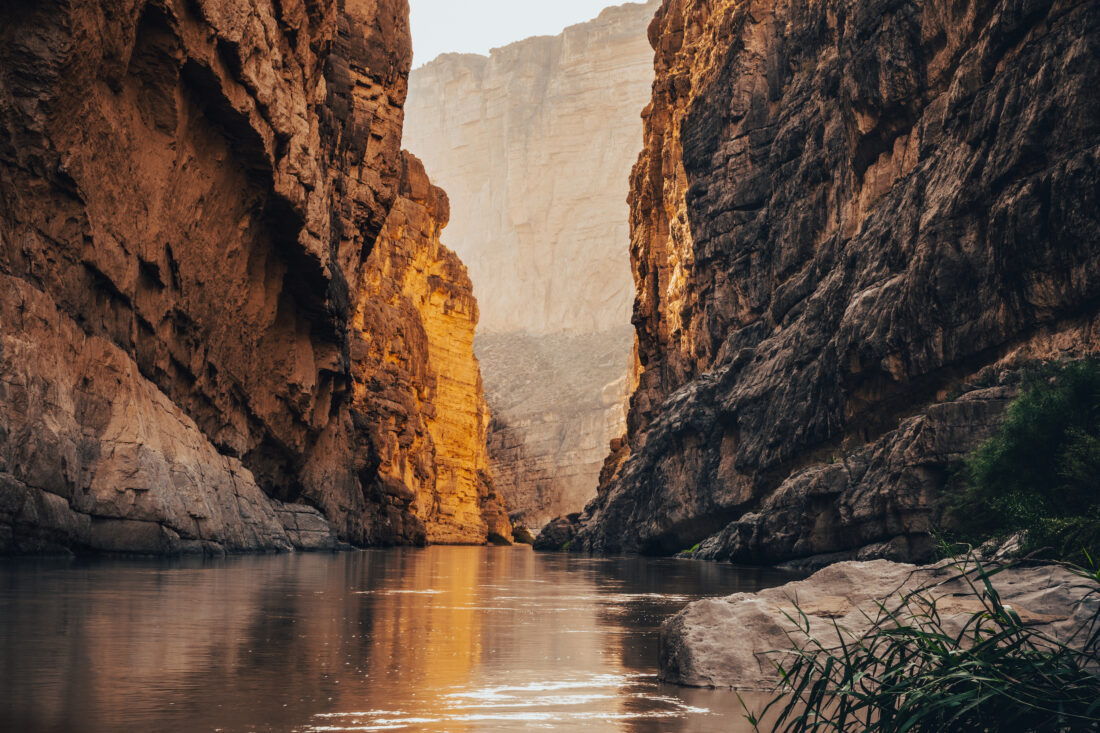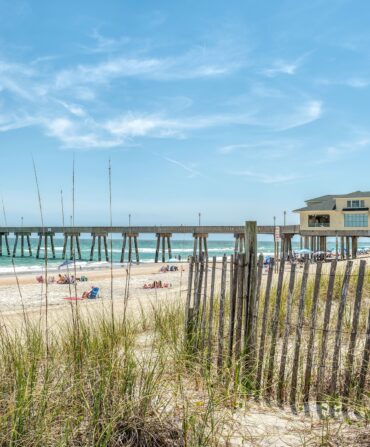The range of ecosystems in the American South is unmatched: sweeping flat pine stands, meandering blackwater swamps, isolated barrier islands, baked-earth deserts, and lush forested valleys and mountaintops. Within these places lives an equally astounding range of wildlife, from roaming black bears and panthers to salamander and fish species confined to one side of a mountain or a single stream. National parks and other protected lands offer a window into all of these landscapes and secret lives.

“A wilderness…is hereby recognized as an area where the earth and its community of life are untrammeled by man, where man himself is a visitor who does not remain,” states the Wilderness Act of 1964. That act has since created over eight hundred federally designated expanses of the most pristine and remote terrain, secured within larger park and refuge systems. From well-known gems like the Everglades to tucked-away patches of the rolling Blue Ridge Mountains, here are seven wilderness areas that represent some of the South’s most remote places.
Shenandoah Wilderness, Virginia
Over half of Shenandoah National Park—whose entrance sits an easy seventy-five miles from Washington, D.C.—comprises the third largest wilderness area east of the Mississippi. It wasn’t always so; historically, this land was logged and disturbed, but years of protection and conservation have returned the forests, streams, and valleys to their untamed state. Visitors to the 175-mile crisscross of trails in the wilderness area can spot bobcats, black bears, the endangered Shenandoah salamander, and a host of neotropical migrant birds along with resident species like cerulean warblers, scarlet tanagers, and peregrine falcons.
Big Bend Wilderness, Texas
Remote West Texas has a rugged beauty all its own, and there’s nowhere better to take it in than Big Bend National Park’s 800,000 acres—538,250 of which are a designated wilderness area. A hundred and fifty miles of trail hug steep canyons and natural springs, wind through expanses of dry, rocky earth, and reveal mountains like the Chisos, so sudden and isolated on the landscape that they are called sky islands. Deserts like this are deceptively diverse in wildlife, too: The park is home to more species of birds, bats, butterflies, ants, and scorpions than any other national park. And at night, gaze up at some of the best dark skies in the country.
Okefenokee Wilderness, Georgia

Native Americans called this vast bog—the largest and most pristine blackwater wetland ecosystem in the country—the “land of trembling earth” due to the unstable, shuddery peat covering much of the swamp floor. That same peat’s tannins stain the snaking waterways—the domain of alligators and river otters—the color of tea. Overhead, woodpeckers scale cypress trees dripping with moss, and indigo snakes wind through longleaf pine forests dotted with carnivorous pitcher plants. The wilderness area is tucked into the larger Okefenokee National Wildlife Refuge, which spans the Georgia-Florida border and is best explored by kayak via 120 miles of marked trails. Currently, the Okefenokee is under threat from a mining proposal.
Marjory Stoneman Douglas Wilderness, Florida
Though Florida’s famed “river of grass” has faced a long history of human modification, it remains untamed—especially the 1.3 million acres of Everglades National Park that make up the Marjory Stoneman Douglas Wilderness. While it may be hot, humid, and buggy, this massive, intricate system of marshes, waterways, mangroves, and cypresses is an irreplaceable national gem and a point of pride for Floridians. Endangered Florida panthers and black bears roam the terrain, while snail kites, roseate spoonbills, and wood storks grace the skies.
Joyce Kilmer-Slickrock Wilderness, North Carolina

“I think that I shall never see / a poem as lovely as a tree,” wrote Joyce Kilmer in his 1913 poem Trees. The lush wilderness area—named in memory of the author—is outfitted with 130 tree species and nearly two thousand other plant species, and sits snugly between Western North Carolina’s Nantahala National Forest and East Tennessee’s Cherokee National Forest. This is old-growth forest—a rarity that transports visitors wandering among hundred-foot tall tulip poplars back in time. On the fern-covered forest floor, look out for ring-necked snakes, red and spring salamanders, and wood frogs.
Cape Romain Wilderness, South Carolina
Almost all of the barrier islands, sandy beaches, channel-riddled salt marsh, and maritime forest that make up Cape Romain National Wildlife Refuge are designated as wilderness. Just north of Charleston, the refuge snakes along the South Carolina coast for twenty-two miles, only accessible by boat, be it by kayak, canoe, sailboat, or motorboat. Just shy of three hundred bird species—many of them migratory seabirds and shorebirds like black skimmers and red knots—rely on Cape Romain, as do twenty reptile species, including loggerhead sea turtles.
Cranberry Wilderness, West Virginia
The vast Monongahela National Forest in West Virginia’s Allegheny Mountains is home to flying squirrels, snowshoe hares, woodcocks, grouse, beavers, red and gray foxes, and minks, to name a few mammals. And 47,815 acres of it comprise the Cranberry Wilderness, a rugged backpacking area that takes its name from its many cranberry bogs—beds layered with sand, peat, and gravel where the red berry grows. Appalachian hardwoods and rhododendron groves abound through the valleys and peaks, and the mountaintops feature rare high-elevation red spruce forests.








